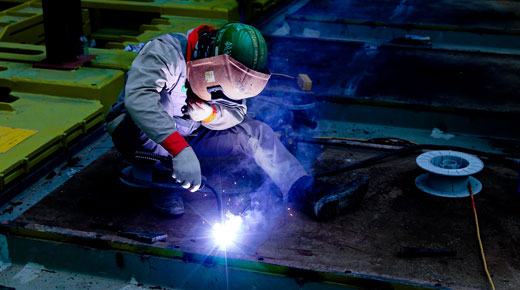Manufacturing is in the middle of a new industrial revolution that requires skilled laborers. However, by most reports, many manufacturers lack enough of these well-trained employees, creating a worker shortage due to the skills gap—the difference between the skills manufacturers need and the skills job applicants have.
|
ADVERTISEMENT |
Companies are responding to the skills gap in numerous ways, seeking novel approaches to bridge the divide between the knowledge the workforce has and the knowledge they need.
Technology automates formerly routine processes, decreasing the need for workers who once did these jobs. Although manufacturers no longer need as large a workforce, they still need to find skilled laborers, ones who understand how to program and run a CNC or industrial robot. Although some work has been done toward addressing the skills gap, two out of every three companies don’t have a plan for remedying the problem.
…

Comments
How many jobs are affected?
Hello I enjoyed your helpful and informative article. I just read an August 2017 article that reported 390,000 of these manufacturing jobs open. Also, it predicted 2 million of these will open in the next decade. Are thes numbers still relatively accurate a year later? Are the tools you mentioned staring to make a difference i filling these jobs? I don't know if employees being trained on the job would be included in the 390,000.
Thanks.
This reference came from one of your references
https://www.impomag.com/videos/2017/08/video-us-plants-struggle-fill-skilled-positions?cmpid=horizontalcontent&__hstc=16407529.f15967ceb00078256e0195d13b4c1739.1529423098954.1529423098954.1529423098954.1&__hssc=16407529.1.1529423098956&__hsfp=901146607
Hi John, I'm glad you enjoyed
Hi John,
I'm glad you enjoyed the article!
I found an article published in The Hill that confirms the prediction that 2 million jobs will need to be filled. You'll find the statistic halfway down the page. Unfortunately, there are a lot of baby boomers eligible for retirement, so even right now the number of new hires doesn't meet the number of openings.
The tools mentioned in the article are definitely a start to addressing the problem because without them the gap would be much larger. The Bureau of Labor Statistics also has some interesting data about current workforce statistics from the last couple years. If I'm reading the data right, it looks like out of the 421,000 jobs open in March of 2018, 338,000 were filled. We are closing in on the gap, but still, have a way to go and I expect to see this fluctuate for a while. I think encouraging more people to consider manufacturing jobs is the best way to fill these open positions. Starting young, in middle and high school, would be ideal.
Manufacturing Skills Gap
The article addressed several causes for the skills gap but one. I have noticed is that some high school counselors and families feel there is a lack of prestige associated with manufacturing. Once upon a time skilled labor was much more respected and valued. The task is also to change that misperception that a manufacturing career is not as important, as challenging, as respectable or as creative as an academic career.
Apprenticeships in public school
Two years ago, recognizing the oncoming shortage of skilled candidates, the State of Maryland instituted a pilot apprenticeship program within the public school system. Having proven successful in the original two counties, the program is being rolled out across the state with the 2018-2019 school year.
Considering the diversity of communities across the state, the results of the expanded program will provide a baseline to estimate the potential success of similar programs in other areas of the country.
Details of the program may be found at: https://www.dllr.state.md.us/employment/appr/youthappr.shtml
Add new comment